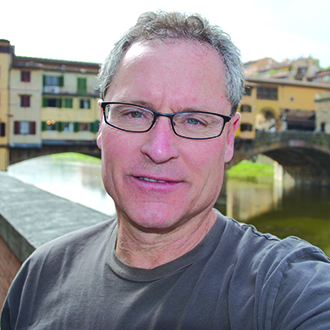So where will you take the family on the next vacation? There are vacations such as cruises or Club Med that boast relaxation and exploration. There are vacations that offer excitement and adventure, such as skiing, scuba diving or working a dude ranch. And of course, there are vacations that are nonstop exhilaration, as in Disney World or a multiday river-rafting trip. Then there are vacations that can combine all of these elements and will expose your family to a foreign culture and language and give them a palpable, colorful sense of history that could be transformative. A trip to a medieval walled city will create memories and put an experiential and personal face on subjects in school such as history, language, sociology and anthropology. I have always learned best by doing, by immersion, by throwing myself into an experience, sometimes with no background information. I try to absorb everything I can.
Recently, I returned from a week in the medieval fortress city of Carcassonne in the Languedoc-Roussillon region of southern France, and it was truly mesmerizing. The city is at the intersection of the Mediterranean Sea, the Atlantic Ocean, the Iberian Peninsula (Spain and Portugal) and the rest of Europe. Its strategic location along commercial trade routes made it a desirable area for nobility to control, and fortification, which began in earnest around the year 300, continued for centuries.
There is an outer wall about 45 feet high with defensive positions and bowman slits from which to repel an attack. Inside this wall is another 40-foot-high wall with similar defenses. They protect cobblestone streets, a cathedral that dates from 1096 and an additionally fortified castle that’s at the center of the small city. Carcassonne is one of 981 worldwide sites recognized by UNESCO as having “outstanding universal value.” (UNESCO is an acronym for United Nations Educational, Scientific and Cultural Organization, which puts its seal of approval on places that help unite humanity by illustrating our shared values.)
Inside the walls, history speaks. Along with the castle and cathedral, there is the ramparts walk, which you can tour with a knowledgeable guide. There are also restaurants and cafés for all budgetary and time constraints. And what vacation would be complete without a visit to a torture museum? During the Inquisition, the Roman Catholic Church invented all sorts of ways to extract confessions from “sinners” or enforce conversions with devices that are nothing short of horrifying.
Carcassonne is at the edge of a region that is home to France’s largest by volume wine production area. Some 30 years ago, the region was making uninteresting bulk wine, mostly to be consumed locally or shipped by tanker truck for blending in other regions. Today, with the introduction of better grape varietals, production techniques and winemaking abilities, the wines are not only potable but wonderful and cellar-worthy.
Thank the wineries and winemakers for this. Eric Fabre was general manager of Château Lafite-Rothschild for many years. He moved his family to the south of France and created Château d’Anglès. Gerard Bertrand inherited a winery from his dad and has taken it to a much higher level. Domaine Gayda is a winery on the western edge of the Languedoc built from scratch, always organic with inexpensive but well-crafted wines. A $20 wine from Languedoc-Roussillon might be comparable to a $35 wine from the much more recognized regions of Bordeaux or Burgundy. And every $10 increase in bottle price should reward the consumer exponentially in flavor, texture and depth.
For adventure you can rent some serious or “poking around” bicycles and explore the region. There are numerous small villages a short ride or drive from Carcassonne. We rode bikes along a canal that had been built years ago to support local commerce, most notably wine. The Mediterranean Sea is just a few kilometers away and the beaches are wonderful. And if you visit a winery, which should be on your “must-do” list, it is highly likely the owner or the winemaker, often one and the same person, will welcome you and taste the wines with you. This just doesn’t happen in the more highly pedigreed wine regions of the world. There is also a ropes and zip-line course nearby and plenty of high hills for hikes or mountain bike rides offering up views of the sea.
As a student I always felt disconnected from history and language courses because they were so academic and nonexperiential. I remember having a French conversation as an adult with a woman in northern Italy who spoke no English, while I spoke no Italian. We each spoke broken French and had a very amusing but understandable conversation. I remember thinking to myself, “Wow, this French is actually working.” Take the family to a foreign place with an exciting history. You will breathe life into their studies.
Write me at doug@dougpaulding.com.



“savez vous carcassonne” is wrong. Frrench people say “connaissez vous…”. English speaking people very often make that mistake because they translate “connaître” and” savoir” by a single English verb “to know”…